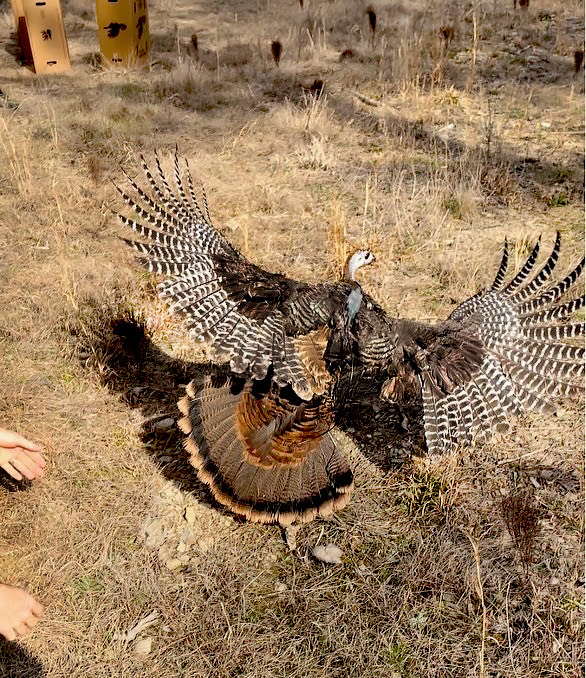
In the Southeastern Study, researchers continued trapping efforts until turkey hunting began April 16. An additional 10 hens were captured. Each was fitted with a backpack-style transmitter. No males were captured during April.
_________
PHOTO: A wild turkey hen carrying a backpack transmitter takes off after being released. (OCFWRU)
_________
Seven mortalities were logged during April: one attributed to capture myopathy, two to bobcat depredation, and four to depredation by unknown predators.
In April, 21 hens were transmitting and being monitored for nesting behavior. At the end of April, seven hens had initiated nests, but two of those were lost. One nest was abandoned for unknown reasons and the other was depredated.
The active nests are monitored daily. Also, several hens were showing reduced movement, which may indicate nesting behavior. As two hens are using private property, we are working on acquiring access for nest and poult monitoring for these birds. We have also secured permission from Arkansas Game and Fish Commission for monitoring and poult captures in case any marked hens move cross the state line.
In the Southwestern Study, doctoral student Cody Griffin will begin working on the project this month. Wildlife Biologist Marcus Thibodeau with the Oklahoma Department of Wildlife Conservation worked with Game Wardens in the region to contact private landowners about potential turkey trapping sites.
(This research is funded through the Wildlife Restoration Program F21AF02702 (W-216-R-1) and the Oklahoma State University.)
|
